#paul tibbets
Video
youtube
Boeing B-29 Superfortress | Recalling the Hiroshima event, post-war, and...
#youtube#b29#b 29 superfortress#van kirk#enola gay#hiroshima#atomic bomb#paul tibbets#b29 bomber#pacific war#ww2 history#wwii history#airplane#aircraft#aviation
19 notes
·
View notes
Text
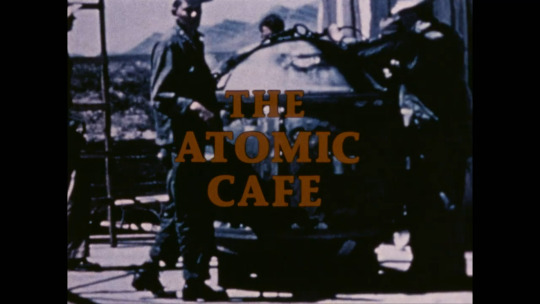


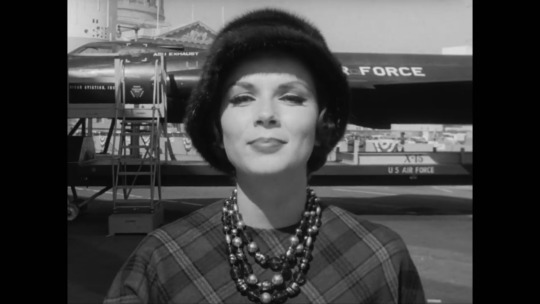
youtube
The Atomic Cafe (1982)
My rating: 7/10
You know, I think this really helped me understand why the US is Like That. Yeesh.
#The Atomic Cafe#Jayne Loader#Kevin Rafferty#Pierce Rafferty#Paul Tibbets#Harry S. Truman#W.H.P. Blandy#Youtube
1 note
·
View note
Text
*kicks legs* just thinking about how Paul Tibbets is hopefully burning in hell :)
#too cowardly to have a headstone so we can't even find his grave to piss on#ww2#paul Tibbets#Hiroshima
0 notes
Text
You hear a lot about “America dropped the bomb” but never the people who actually did it. Yes America did this but the individuals who took part in it also have names.
Paul W. Tibbets bombed Hiroshima and Charles Sweeney bombed Nagasaki.
This isn’t. A true depth into research about them but only things I found from brief google searches. Neither of them publicly denounced the bombing.

I had no idea the died so recently in history……. I don’t know how they could live with themselves. And I’m not saying that in a scolding way I mean it literally I can’t imagine living with the knowledge I caused that. He knew clearly people thought badly of him if he didn’t want a headstone… I just can’t. Imagine not knowing you did wrong.

I think this bit from Wikipedia explains about any sympathy Tibbets may have had for the victims (none)


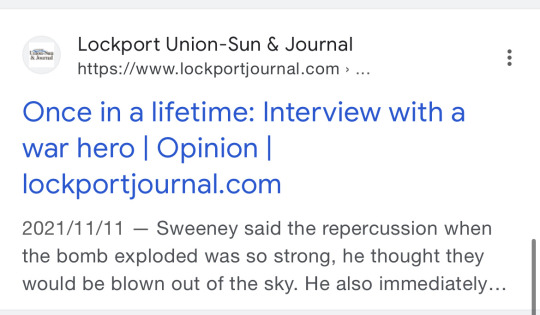
I know this isn’t like a big name newspapers but a war hero???????? how can anyone say that…. A war hero huh
#this isn’t a true academic search just stuff I found on google#didn’t see much about what the other guy thought
179 notes
·
View notes
Text

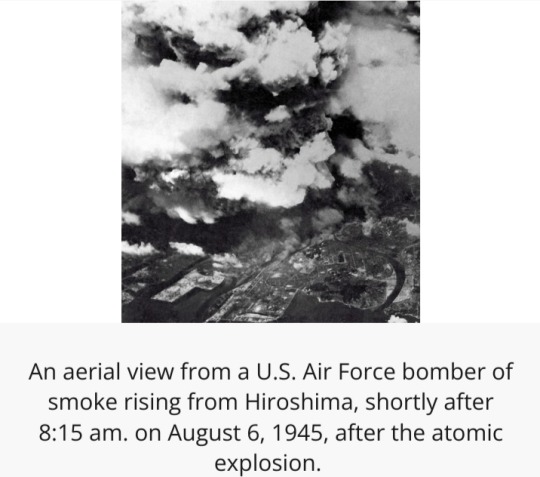
On 6 August 1945, during World War II (1939-45), an American B-29 bomber dropped the world’s first deployed atomic bomb over the Japanese city of Hiroshima.
The explosion immediately killed an estimated 80,000 people; tens of thousands more would later die of radiation exposure.
Three days later, a second B-29 dropped another A-bomb on Nagasaki, killing an estimated 40,000 people.
Japan’s Emperor Hirohito announced his country’s unconditional surrender in World War II in a radio address on August 15, citing the devastating power of “a new and most cruel bomb.”
The Manhattan Project
Even before the outbreak of war in 1939, a group of American scientists — many of them refugees from fascist regimes in Europe — became concerned with nuclear weapons research being conducted in Nazi Germany.
In 1940, the U.S. government began funding its own atomic weapons development program, which came under the joint responsibility of the Office of Scientific Research and Development and the War Department after the U.S. entry into World War II.
The U.S. Army Corps of Engineers was tasked with spearheading the construction of the vast facilities necessary for the top-secret program, codenamed “The Manhattan Project” (for the engineering corps’ Manhattan district).

Over the next several years, the program’s scientists worked on producing the key materials for nuclear fission — uranium-235 and plutonium (Pu-239).
They sent them to Los Alamos, New Mexico, where a team led by J. Robert Oppenheimer worked to turn these materials into a workable atomic bomb.
Early on the morning of 16 July 1945, the Manhattan Project held its first successful test of an atomic device — a plutonium bomb — at the Trinity test site at Alamogordo, New Mexico.
No Surrender for the Japanese
By the time of the Trinity test, the Allied powers had already defeated Germany in Europe.
Japan, however, vowed to fight to the bitter end in the Pacific, despite clear indications (as early as 1944) that they had little chance of winning.
In fact, between mid-April 1945 (when President Harry Truman took office) and mid-July, Japanese forces inflicted Allied casualties totaling nearly half those suffered in three full years of war in the Pacific, proving that Japan had become even more deadly when faced with defeat.
In late July, Japan’s militarist government rejected the Allied demand for surrender put forth in the Potsdam Declaration, which threatened the Japanese with “prompt and utter destruction” if they refused.
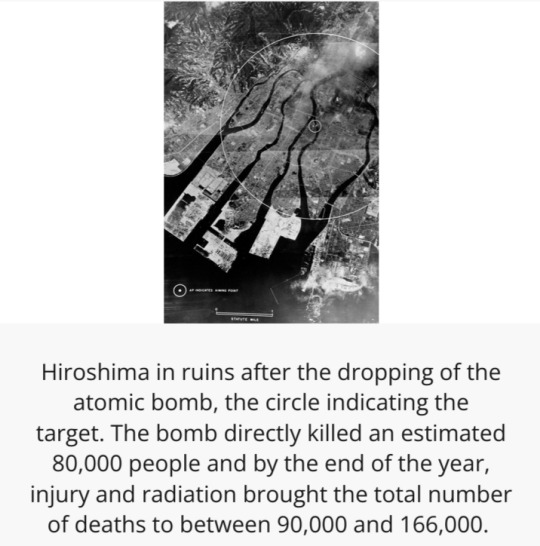
General Douglas MacArthur and other top military commanders favored continuing the conventional bombing of Japan already in effect and following up with a massive invasion, codenamed “Operation Downfall.”
They advised Truman that such an invasion would result in U.S. casualties of up to 1 million.
In order to avoid such a high casualty rate, Truman decided – over the moral reservations of Secretary of War Henry Stimson, General Dwight Eisenhower and a number of the Manhattan Project scientists – to use the atomic bomb in the hopes of bringing the war to a quick end.
Proponents of the A-bomb — such as James Byrnes, Truman’s secretary of state — believed that its devastating power would not only end the war but also put the U.S. in a dominant position to determine the course of the postwar world.
'Little Boy' and 'Fat Man' Are Dropped
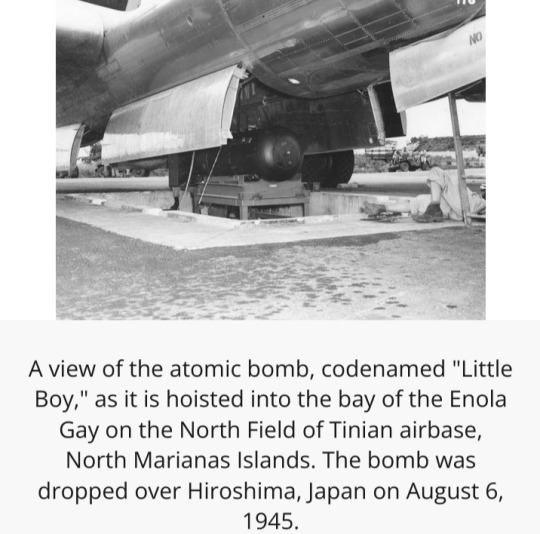
Hiroshima, a manufacturing center of some 350,000 people located about 500 miles from Tokyo, was selected as the first target.
After arriving at the U.S. base on the Pacific island of Tinian, the more than 9,000-pound uranium-235 bomb was loaded aboard a modified B-29 bomber christened Enola Gay (after the mother of its pilot, Colonel Paul Tibbets).
The plane dropped the bomb — known as “Little Boy” — by parachute at 8:15 in the morning.
It exploded 2,000 feet above Hiroshima in a blast equal to 12-15,000 tons of TNT, destroying five square miles of the city.
Hiroshima’s devastation failed to elicit immediate Japanese surrender, however, and on August 9, Major Charles Sweeney flew another B-29 bomber, Bockscar, from Tinian.
Thick clouds over the primary target, the city of Kokura, drove Sweeney to a secondary target, Nagasaki, where the plutonium bomb “Fat Man” was dropped at 11:02 that morning.
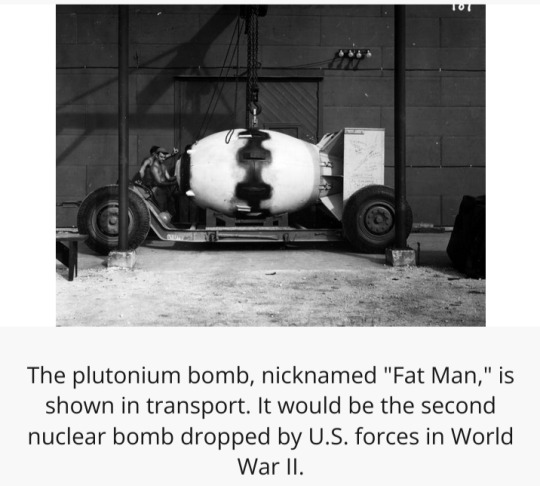
More powerful than the one used at Hiroshima, the bomb weighed nearly 10,000 pounds and was built to produce a 22-kiloton blast.
The topography of Nagasaki, which was nestled in narrow valleys between mountains, reduced the bomb’s effect, limiting the destruction to 2.6 square miles.
Aftermath of the Bombing

At noon on 15 August 1945 (Japanese time), Emperor Hirohito announced his country’s surrender in a radio broadcast.
The news spread quickly.
“Victory in Japan” or “V-J Day” celebrations broke out across the United States and other Allied nations.
The formal surrender agreement was signed on September 2, aboard the U.S. battleship Missouri, anchored in Tokyo Bay.
Because of the extent of the devastation and chaos — including the fact that much of the two cities' infrastructure was wiped out — exact death tolls from the bombing of Hiroshima and Nagasaki remain unknown.
However, it's estimated roughly 70,000 to 135,000 people died in Hiroshima and 60,000 to 80,000 people died in Nagasaki, both from acute exposure to the blasts and from long-term side effects of radiation.


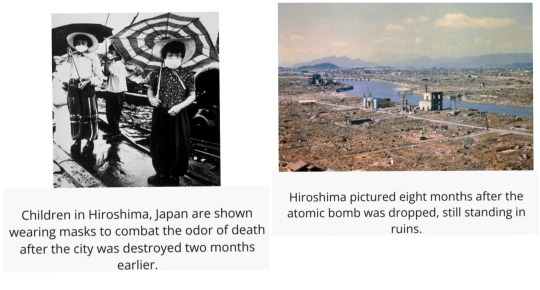
#Bombing of Hiroshima and Nagasaki (1945)#6 August 1945#atomic bomb#Hiroshima#Nagasaki#B-29 bomber#A-bomb#U.S. Army Corps of Engineers#The Manhattan Project#nuclear weapons research#Office of Scientific Research and Development#War Department#World War II#WWII#uranium-235#plutonium (Pu-239)#nuclear fission#plutonium bomb#J. Robert Oppenheimer#Oppenheimer#Trinity test#Potsdam Declaration#General Douglas MacArthur#Operation Downfall#Henry Stimson#General Dwight Eisenhower#Enola Gay#Colonel Paul Tibbets#Bockscar#V-J Day
32 notes
·
View notes
Text

Here again, list of the twelve B-17s that flew the first mission of the 8th AF, Aug. 17, 1942. Note pilots Frank Armstrong and Paul Tibbets in one of the lead bombers, Butcher shop. Photo Roger Freeman Collection. #WWII
@Francesbekafigo via X
10 notes
·
View notes
Photo

Elizabeth L. Gardner (1921 – December 22, 2011) One of the first American female military pilots and member of the WASPS ( Women Airforce Service Pilots), having trained with Lieutenant Col. Paul Tibbets. She's seen here sitting in the pilot's seat of a Martin B-26 Marauder, which she flew expertly during WWII along with aircraft that towed aerial targets.
After the war, Miss Gardner worked as a test pilot and with General Textile Mills to design and implement aircraft parachutes. She participated in at least two test flights with the experimental chute in December 1945. During both tests, she was forced to bail out of the aircraft when the parachute became tangled in the test aircraft. During the second incident, the aircraft entered a dive when its elevators were jammed by the parachute; Miss Gardner managed to escape from the cockpit and was only 500 feet from the ground when her own parachute opened.
In 2009, WASP pilots were awarded a Congressional Gold Medal through a unit citation.
The heroic Miss Gardner passed away in December 2011 in Manhattan, New York at the age of 90.
#elizabeth gardner#wasp pilot#women air force service pilot#wwii#wwii pilot#hero#military#wwii watches#wwii timepiece#watches#timepiece#military watches#horology#Congressional Gold Medal#WWII History
83 notes
·
View notes
Text

Hiroshima (Japan) After the Bomb....
On Monday, August 6, 1945, at 8:15 a.m. (Hiroshima time), the nuclear weapon "Little Boy" was dropped on Hiroshima from an American Boeing B-29 Superfortress, the Enola Gay, flown by Paul Tibbets (23 February 1915 – 1 November 2007), directly killing at least 70,000 people, including thousands of Korean slave laborers. Fewer than 10% of the casualties were military. By the end of the year, injury and radiation brought the total number of deaths to 90,000–140,000. The population before the bombing was around 345,000. About 70% of the city's buildings were destroyed, and another 7% severely damaged.
12 notes
·
View notes
Video
B-29 Enola Gay by Willard Womack
Via Flickr:
Enola Gay taxing to its parking space after landing from the only mission it flew during the war August 5, 1945. The first Atomic bomb has been used; the war is almost over. Trivia: August 17 1942 Paul Tibbets, Group Commander and pilot in command of the Enola Gay, was pilot in command of the B-17 "Butcher Shop", the lead bomber on the first Eighth Air Force bombing mission out of England. Two crewmen, on that mission, were also with him on the mission 5 August., 1945
17 notes
·
View notes
Text
"errm that just happened" - Paul Tibbets (August 6,1945)
2 notes
·
View notes
Video
youtube
B-29 #Superfortress. The #atomic bomb, and Paul Tibbets #biography. VIDEO: https://youtu.be/6BNZgvqlLTQ
0 notes
Text

Il filo seguito da Anders nel parlare della bomba atomica traccia una connessione strettissima tra la tragicità della Shoah e la catastrofe del nucleare, ovvero tra Auschwitz e Hiroshima.
Nel corso del ventesimo secolo l’uomo è stato capace di costruire Auschwitz e di distruggere Hiroshima, segnala Primo Levi in una notissima e bellissima poesia del 1986 dal titolo Delega. Anche Theodor Wiesengrund Adorno sottolinea, nel saggio L’educazione dopo Auschwitz (Erziehung nach Auschwitz)31, la stretta parentela tra la Shoah e i genocidi del Novecento, al cui contesto appartiene anche l’invenzione della bomba atomica.
Come Anders non si stanca di ribadire, il collegamento tra i due eventi tragici del Novecento ha a che fare con la questione della responsabilità umana deresponsabilizzata nell’epoca della riproducibilità tecnica della morte. Il male, provocato con lo sterminio o con l’atomica, è frutto di una trama organizzata fatta di parcellizzazioni della responsabilità individuale. La divisione del lavoro degenera in divisione della responsabilità, come aveva sottolineato anche Hannah Arendt, la prima moglie di Anders, nel suo studio La banalità del male. Eichmann a Gerusalemme (1963)32. In linea con le di lei osservazioni (ad esempio quelle proposte in Vita activa), anche per Anders la bomba costituisce l’essenza ultima dell’irrazionalismo morale di un sistema totalitario basato sul processo di deresponsabilizzazione degli individui.
La posizione di Eatherly si distingue da quella degli altri piloti che non si pentirono dell’azione commessa. È il caso del colonnello al comando dell’aereo di ricognizione «Enola Gay», Paul Tibbets, che commentò la tragedia con questa frase: «Non mi posi un problema morale: feci quello che mi avevano ordinato di fare. Nelle stesse condizioni lo rifarei».
Nel mondo della «morte a distanza» il nesso causa-effetto è totalmente allentato ed esula dalle maglie del sentimento umano. Il problema è per Anders quello del «dislivello prometeico», della frattura incomponibile tra il lavoro e la responsabilità (variante, questa, dell’asincronicità tra produrre e immaginare). Si tratta di una sorta di «schizofrenia morale» in cui un buon padre di famiglia può essere un criminale e un criminale può essere un impiegato. Emblematico è proprio il caso Eichmann, l’uomo banale, perfetto funzionario e perfetto padre di famiglia, e al contempo feroce criminale nazista. Come si legge nell’Uomo è antiquato, l’addetto al campo di sterminio non ha agito, ma per quanto ciò possa apparire paradossale ha lavorato33.
All’interno di quest’orizzonte etico Eatherly rappresenta per Anders l’«antitesi» di Adolf Eichmann (1906-1962), ovvero del grigio impiegato deresponsabilizzato o anche del funzionario acritico che, producendo sistematicamente cadaveri, ha solo obbedito agli ordini. Così Anders: «No, Eatherly non è il gemello di Eichmann, ma la sua grande e (per noi) consolante antitesi. Non è l’uomo che fa del meccanismo un pretesto e una giustificazione della mancanza di coscienza, ma l’uomo che scruta il meccanismo come paurosa minaccia alla coscienza»34. Agli occhi di Anders la figura di Eatherly, e soprattutto il suo percorso di dilaniante «presa di coscienza» dai sensi di colpa, ribalta l’argomento del «banale sterminatore» Eichmann che oggi è diventato, in modo davvero inquietante, quasi senso comune: «Anche se mi sono limitato a eseguire — così Anders spiega il punto di vista del suo pen friend —, è stato fatto da me; la mia responsabilità non riguarda solo i miei atti individuali, ma tutti quelli a cui ho preso parte»35.
3 notes
·
View notes
Text
The mission was led by Colonel Paul Tibbets, who had flown the lead B-17 - “Butcher Shop” - on the first combat mission flown by the Eighth Air Foprce three years earlier on August 17, 1942. The crew included copilot Robert Lewis, bombardier Tom Ferebee, navigator Theodore Van Kirk, and tail gunner Robert Caron.
Pilot Paul Tibbets: “We turned back to look at Hiroshima. The city was hidden by that awful cloud… boiling up, mushrooming, terrible and incredibly tall. No one spoke for a moment; then everyone was talking. I remember (copilot Robert) Lewis pounding my shoulder, saying ‘Look at that! Look at that! Look at that!’ (Bombardier) Tom Ferebee wondered about whether radioactivity would make us all sterile. Lewis said he could taste atomic fission. He said it tasted like lead.”
Navigator Theodore Van Kirk recalled the shockwaves from the explosion: “(It was) very much as if you’ve ever sat on an ash can and had somebody hit it with a baseball bat… The plane bounced, it jumped and there was a noise like a piece of sheet metal snapping. Those of us who had flown quite a bit over Europe thought that it was anti-aircraft fire that had exploded very close to the plane.” On viewing the atomic fireball: “I don’t believe anyone ever expected to look at a sight quite like that. Where we had seen a clear city two minutes before, we could now no longer see the city. We could see smoke and fires creeping up the sides of the mountains.”
Tail gunner Robert Caron: “The mushroom itself was a spectacular sight, a bubbling mass of purple-gray smoke and you could see it had a red core in it and everything was burning inside. As we got farther away, we could see the base of the mushroom and below we could see what looked like a few-hundred-foot layer of debris and smoke and what have you… I saw fires springing up in different places, like flames shooting up on a bed of coals.”
Six miles below, the people of Hiroshima were waking up and preparing for their daily routines. Up to that point, the city had been largely spared by the rain of conventional air bombing that had ravaged other Japanese cities. Rumors abounded why this was so, from the fact that many Hiroshima residents had emigrated to the U.S. to the supposed presence of President Truman’s mother in the area. Many citizens, including schoolchildren, were recruited to prepare for future bombings by tearing down houses to create fire lanes, and it was at this task that many were laboring or preparing to labor on the morning of August 6. A radio broadcast announced the sighting of the Enola Gay soon after 0800.
The city of Hiroshima was annihilated by the explosion. 70,000 of 76,000 buildings were damaged or destroyed, and 48,000 of those were entirely razed.
Medical doctor Michihiko Hachiya: “Nothing remained except a few buildings of reinforced concrete… For acres and acres the city was like a desert except for scattered piles of brick and roof tile. I had to revise my meaning of the word destruction or choose some other word to describe what I saw. Devastation may be a better word, but really, I know of no word or words to describe the view.”
Writer Yoko Ota: “I reached a bridge and saw that the Hiroshima Castle had been completely leveled to the ground, and my heart shook like a great wave; the grief of stepping over the corpses of history pressed upon my heart.”
TCinLA
4 notes
·
View notes
Text
Enola Gay – El avión de la primera bomba
Enola Gay es el nombre de un avión bombardero Boeing B-29 Superfortress que fue bautizado así en honor a Enola Gay Tibbets, madre de su piloto Paul Tibbets. El 6 de agosto de 1945, durante los últimos compases de la Segunda Guerra Mundial, el Enola Gay se convirtió en el primer avión en lanzar una bomba atómica, la “Little Boy”, que cayó sobre la ciudad japonesa de Hiroshima y la arrasó casi por completo. El bombardero también participó tres días después en el segundo ataque atómico como avión de reconocimiento sobre el objetivo primario, la ciudad de Kokura, pero la excesiva nubosidad y el humo procedente del bombardeo de una ciudad cercana obligaron a lanzar la bomba atómica sobre Nagasaki. En esta ocasión la bomba la transportaba otro bombardero B-29, llamado Bockscar.

1 note
·
View note
Text
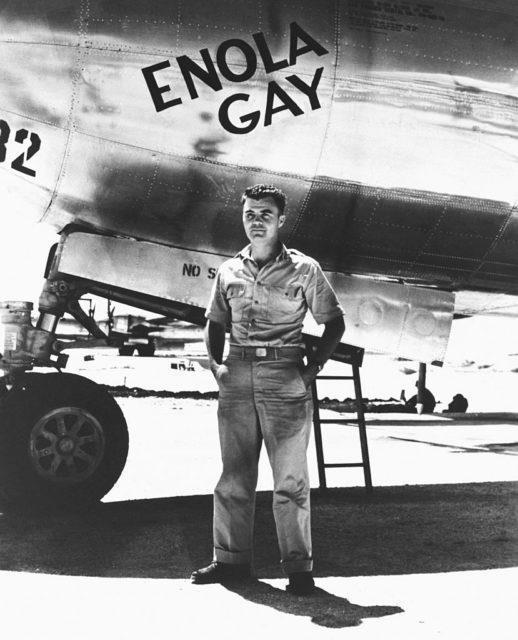
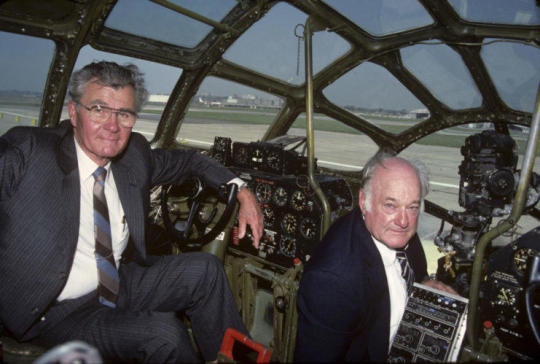
Paul Tibbets Dropped the Atomic Bomb on Hiroshima and Was Given No Funeral or Gravestone
**note Tibbets is on the left
Brig. Gen. Paul Tibbets, better known as the man who piloted the Enola Gay during the bombing of Hiroshima, became a well-known figure in the United States at the end of the Second World War. Despite his fame, Tibbets asked that upon his death he receive no funeral or gravestone.
Paul Tibbets' health was in decline for months prior to his death. During this time, he made it clear that he didn't want to have a grave or funeral. He was concerned his plot would be used as a place of protest by those who were against America's actions in Japan and/or against nuclear weapons. He was also concerned it would be desecrated.
Instead of a formal grave, Tibbets asked that he be cremated and his ashes scattered over the English Channel. He chose that spot because he'd flown over it many times during the war. After his death on November 1, 2007, at the age of 92, his wishes were honored and his ashes scattered by his family.
1 note
·
View note
Text
I found this on NewsBreak: Paul Tibbets Dropped the Atomic Bomb on Hiroshima and Was Given No Funeral or Gravestone
I found this on NewsBreak: Paul Tibbets Dropped the Atomic Bomb on Hiroshima and Was Given No Funeral or Gravestone
0 notes